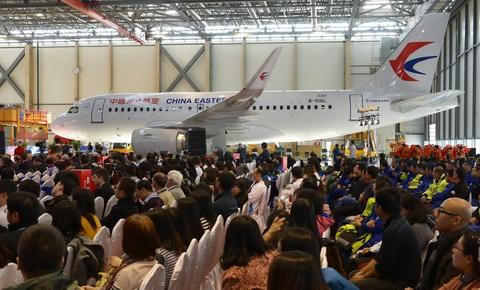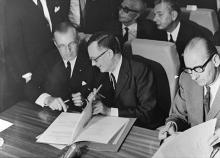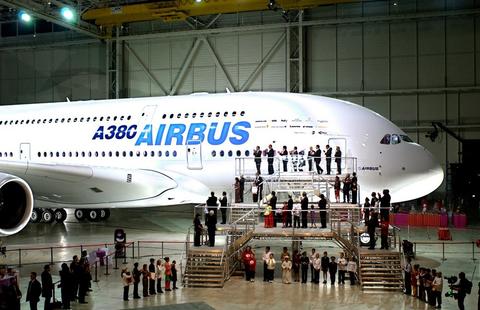Warnings of a new economic downturn in the aviation industry had been sounded by Airbus as early as 2000, even after four years of record orders and deliveries. Being able to forecast trends in the market was essential to the Airbus philosophy of developing new aircraft and new technologies only to meet the needs of its customers.
No one, however, could have predicted the tragic events of 11 September, 2001, when hijacked passenger jets were deliberately crashed into the twin towers of New York’s World Trade Center. Inevitably in the aftermath of such an attack business confidence, already shaky in the face of a creeping recession, collapsed further. The number of people wanting to fly dropped immediately and cancellations of bookings for the following months flooded in. As companies everywhere cut costs many business travellers opted for economy seats. Most airlines, like many industries affected by the fall-out from 9/11, had to dramatically revise their growth forecasts. The slump, similar to that which followed the first Gulf War in 1991, was to lead to several major airlines going bankrupt before the industry began to recover.
Ironically the downturn coincided with the rapid growth of low-cost airlines, especially in Europe. Companies like easyJet found the A320-Family and in particular the A319 - ideal for their short-haul routes, which paired cities previously not directly linked by air. For Airbus it meant its strategy of producing a family of fly-by-wire aircraft which shared commonality and provided airlines with the greatest flexibility possible had, once again, paid off. Low-cost airlines found the economy, reliability and quality of Airbus A320 Family aircraft perfectly suited to the new market. In 2002, in the midst of the downturn, A319s accounted for 148 of the 300 firm orders won by Airbus, with the A320 securing 78.
A market leader
But Airbus was sensitive to the plight of operators struggling to cope with the fall in business. With the number of parked in-service aircraft building up, the profitability of customers had to be protected – without customers, Airbus would have no market. So the company devised an array of finance schemes and rearranged terms where possible to help its customers to continue to buy Airbus aircraft. It was a typically long-sighted solution to an immediate crisis in the industry.
As it had done with the earlier downturn, Airbus pressed ahead aggressively in the knowledge that better times must return. The first A340-600 was delivered in July, 2002, the same month in which Airbus celebrated its 3,000th aircraft delivery. The first deliveries of the ultra long-range A340-500 and the short-range A318 followed in 2003, the year in which manufacture of the major components of the A380 began.
Indeed, 2003 was a landmark year for Airbus: defying the effects of the downturn, it overtook its rival in deliveries of aircraft for the first time. Its total of 305 represented 52% of the world’s aircraft delivered. After setting out in 1970 as a challenger. Airbus could now call itself the world’s leading aircraft manufacturer. The success of Airbus had always been driven by the spirit and passion of its leaders and employees.

Centres of excellence
In July, 2004, Airbus launched a major reorganisation of the company by setting up a series of centres of excellence based around its manufacturing sites and the major components of its aircraft. This streamlined and simplified the company to improve efficiency and quality, equipping Airbus for a significant ramp-up in production in the following years as it acted to maintain its lead in the industry.
Orders were steadily building up for the new double-decker, with publicity boosted by media stories of how it would be fitted out like a flying cruise ship with casinos and gyms on board. At its launch Airbus had spoken of how the A380 was “a truly global programme” involving some 1,000 companies worldwide, 800 of them in the U.S., Russia and Asia. Airbus had entered into industrial partnerships with a number of its biggest suppliers. It was confirmation of the evolution of Airbus from European consortium into a global enterprise, employing tens of thousands of people directly and supporting hundreds of thousands of jobs worldwide.




